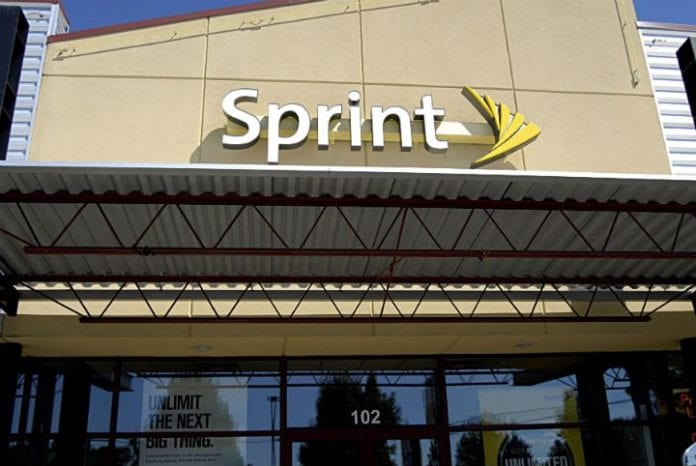Aggressive pricing moves against rivals T-Mobile, Verizon and AT&T dampened consumer spending at Sprint, though recovery appears on track
Sprint fleshed out its second fiscal quarter results highlighted by the continued shift in consumer spending tied to device payment plans and reiterating its plans to cap network capital expenses at below $3 billion for fiscal 2016.
In terms of new data, customer spending mirrored the mixed results shown by rivals, with Sprint’s postpaid average revenue per user falling from $53.99 during the same quarter last year to $50.54 this year, while the prepaid ARPU dropped a more modest 35 cents from $27.66 to $27.31. But, when taking into account device billing that has become common with postpaid monthly installment plans, average billing per user surged $1.02 year-over-year to $71.69.
Sprint during the quarter matched T-Mobile US in rolling out “unlimited” service plans at price points of basically $40 per line if customers sign up four lines of service. The carrier also continues to offer its “50% off” promotion targeting select rate plans of its larger rivals, though has said it plans to de-emphasize that offer.
Providing color on how customers are paying for their mobile devices, Sprint noted subsidies models have fallen from 36% of its postpaid base to 27%; installment plans have grown from 13% last year to 34% at the end of its most recent quarter; and device leasing has dropped from 51% to 39%.
The carrier last week reported a majority of its operating metrics that showed positive customer growth momentum for the carrier relative to two of its three larger rivals. Sprint said it added 740,000 net connections during the period, which included 344,000 postpaid net additions, 823,000 net connection additions through its wholesale and affiliates, and the loss of 427,000 prepaid connections.
Of its postpaid growth, Sprint said phone connections counted for 347,000 net additions, which was double the previous quarter and more than five-times what it posted for the same quarter last year.
Indeed, the carrier showed robust sequential growth compared to the 377,000 net connections posted in the previous quarter, which had a similar matrix of growth for direct postpaid, wholesale and affiliates, but a dip in direct prepaid net additions.
However, the year-over-year comparison was a bit incomplete as Sprint managed to post 1.05 million net connection additions last year, with greater overall growth in its direct postpaid, and wholesale and affiliate segments, and fewer prepaid losses.
Outside of outright growth, Sprint managed to further trim postpaid churn, which dipped from 1.54% last year to 1.52% this year. The carrier noted postpaid phone churn for the latest quarter hit a company record low of 1.37%.
While improved, Sprint’s numbers fell short of T-Mobile US, which earlier this week reported another quarter of industry-leading customer growth and improving financial metrics.
Verizon Wireless last week said it added 525,000 direct net connections during Q3, while AT&T Mobility over the weekend reported 1.5 million total net connection additions to its network during the quarter.
However, Sprint did join T-Mobile US as the only nationwide domestic carrier to post customer growth in the lucrative postpaid “phone” market.
From a financial perspective, Sprint previously reported $8.25 billion in total net operating revenue for the latest quarter compared with $8 billion posted last year and in the previous quarter. Net losses also improved from $585 million last year and $302 million from the previous quarter to $142 million for fiscal Q2.
Sprint said it managed to squeeze $600 million in cost savings out of operations during the latest quarter, which puts its fiscal year-to-date savings at $1.1 billion. Management said it remained on track to find at least $2 billion in run-rate operating expense savings by the end of fiscal 2016, with further reductions planned for 2017.
Adjusted earnings before interest, taxes, depreciation and amortization was a mixed bag, with the $2.35 billion reported for the most recent quarter improving year-over-year, but down sequentially. Sprint did note free cash flow surged year-over-year from negative $100 million to a return of $707 million.
Quarterly spending on capital expenses also remained on a tight leash, with the carrier reporting $828 million in cash capex for the latest quarter, including $470 million on network – which was less than the $1.1 billion from last year – and $358 million for leased devices. Sprint reported just $376 million in capex in its fiscal Q1.
Looking ahead, Sprint raised operating income guidance for fiscal 2016 from a range of between $1 billion and $1.5 billion to new forecasts of between $1.2 billion and $1.7 billion; and full-year cash capital expenses excluding devices leased through indirect channels to come in at under $3 billion citing “better visibility into the timing of payments associated with its network densification plan.”
Bored? Why not follow me on Twitter

